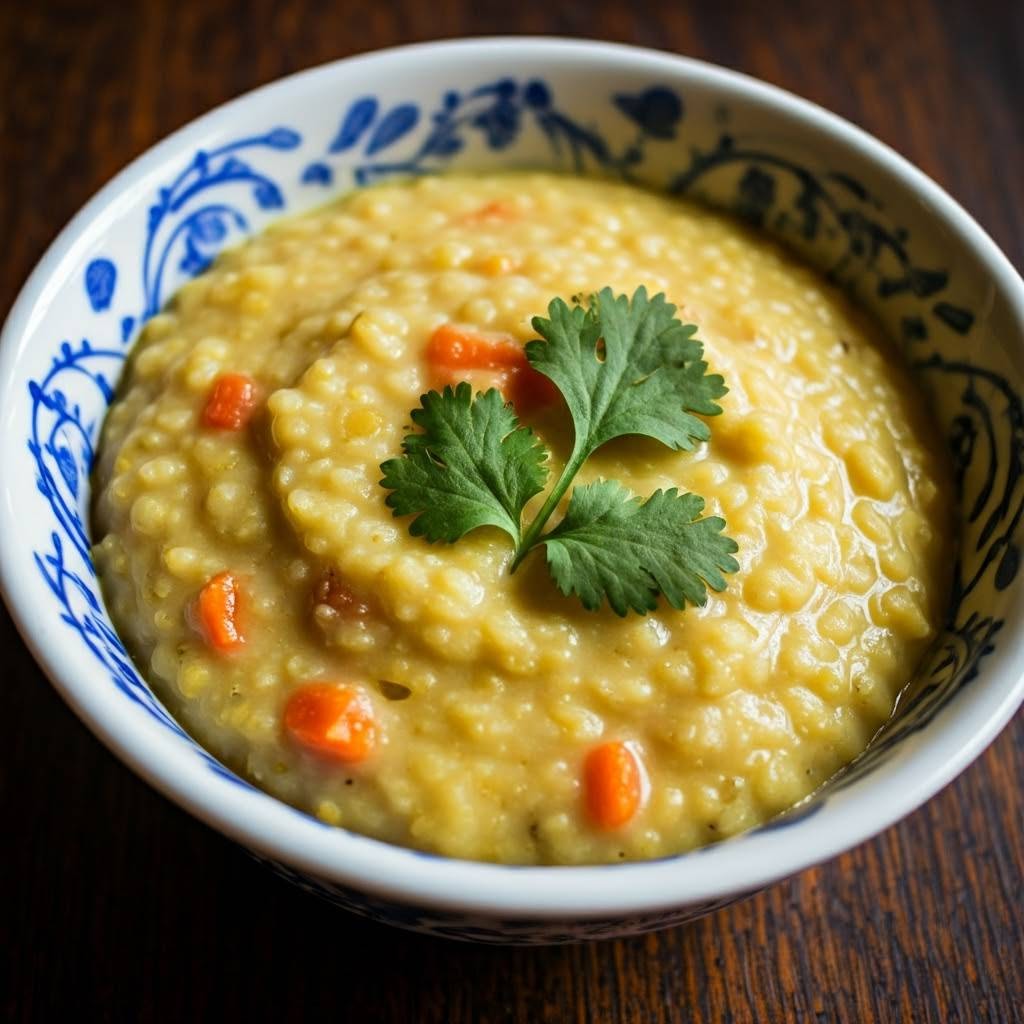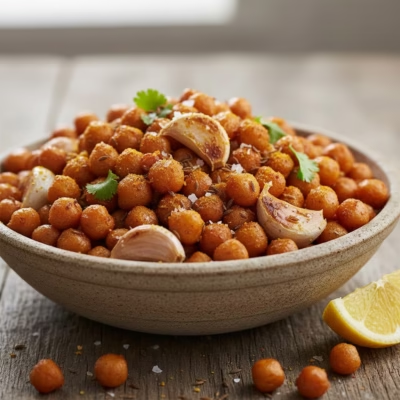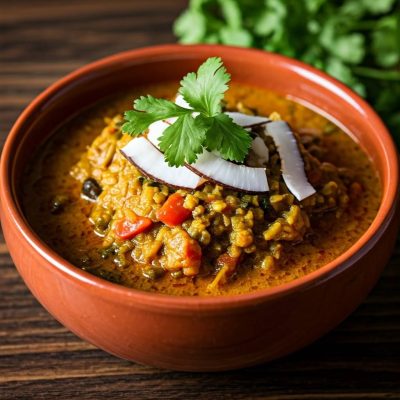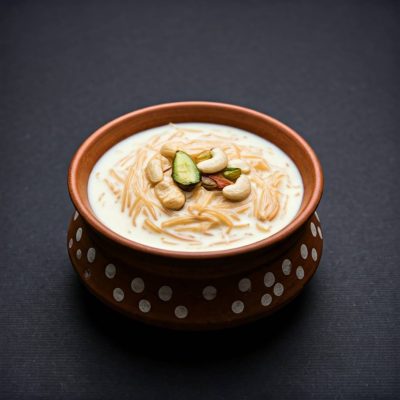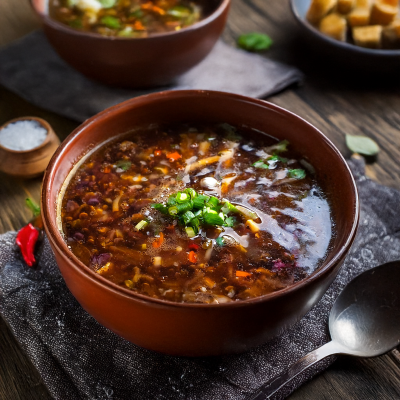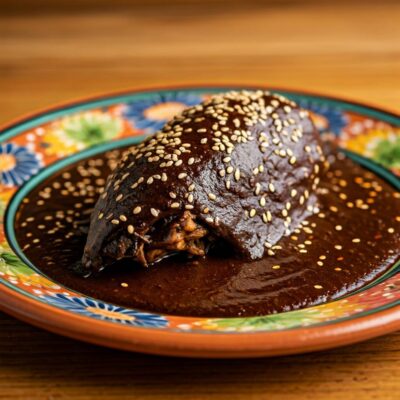Ingredients
- ½ cup raw rice
- ¼ cup moong dal (yellow lentils)
- 200g minced meat (chicken/mutton) (optional)
- 1 small onion (finely chopped)
- 1 small tomato (finely chopped)
- 2 green chilies (slit)
- ½ teaspoon ginger-garlic paste
- ½ teaspoon turmeric powder
- 1 teaspoon cumin seeds
- 1 teaspoon fennel seeds
- 1 teaspoon black pepper powder
- ½ teaspoon garam masala
- 2 tablespoons coconut milk (optional)
- 5 cups water (adjust as needed)
- 2 tablespoons coriander leaves (chopped)
- 1 tablespoon mint leaves (chopped)
- 2 teaspoons ghee or oil
- Salt to taste
Directions
Nombu Kanji is a traditional South Indian porridge, widely prepared during Ramadan as a staple dish for Iftar. This comforting and nourishing dish is made with rice, lentils (moong dal), and a blend of aromatic spices, creating a smooth, mildly spiced porridge that is both filling and easy to digest.
During the fasting month, Nombu Kanji is often served at mosques and homes, providing a warm and hydrating meal to replenish energy levels after a long day of fasting. Some variations include minced meat (chicken or mutton) for added protein, while others use coconut milk for a rich and creamy texture. The slow-cooked combination of rice and lentils gives it a porridge-like consistency, making it both light on the stomach and deeply satisfying.
Beyond its delicious taste, Nombu Kanji is valued for its nutritional benefits, as it provides essential carbohydrates, proteins, and healthy fats, making it an ideal dish for breaking the fast. It is typically paired with crispy vadas, samosas, or pickles, adding contrast to its smooth texture.
Loved for its simplicity, warmth, and wholesome goodness, Nombu Kanji is more than just a meal—it’s a symbol of togetherness, shared at mosques, among families, and in communities throughout Tamil Nadu, Kerala, and Sri Lanka during the holy month of Ramadan. Whether prepared with meat or made as a vegetarian version, this traditional dish remains a Ramadan favorite, bringing comfort and nourishment to those observing the fast.
Here’s an estimated nutritional breakdown for Nombu Kanji (per serving, assuming a recipe that serves 4):
| Nutrient | Amount per Serving |
|---|---|
| Calories | 250–300 kcal |
| Protein | 10–12g |
| Carbohydrates | 35–40g |
| Fat | 8–10g |
| Fiber | 3–4g |
| Sodium | 200–250mg |
| Sugar | 2–4g |
*Disclaimer: Nutritional values are estimates and may vary based on the specific ingredients used in the recipe.
Steps
1 Done | Rinse and SoakWash the rice and moong dal together. Soak for 15–20 minutes. |
2 Done | Tempering & SautéingHeat ghee/oil in a pot. Add cumin seeds and fennel seeds. Add chopped onions, green chilies, and ginger-garlic paste. Sauté until onions turn golden brown. |
3 Done | Cooking the Meat (Optional)If using minced meat, add it now and cook until it changes color. |
4 Done | Adding Spices & TomatoesAdd turmeric powder, black pepper, and garam masala. Mix in chopped tomatoes and cook until soft. |
5 Done | Cooking the Rice & LentilsAdd soaked rice and moong dal. Stir well. Pour in 5 cups of water, add salt, and let it cook on low heat for 20–25 minutes, stirring occasionally. |
6 Done | Final TouchOnce the porridge thickens, add coconut milk, mint, and coriander leaves. Simmer for 2 more minutes. |
7 Done | ServingServe hot with fried onions or crispy vada on the side. This warm and flavorful Nombu Kanji is perfect for breaking your fast! |

